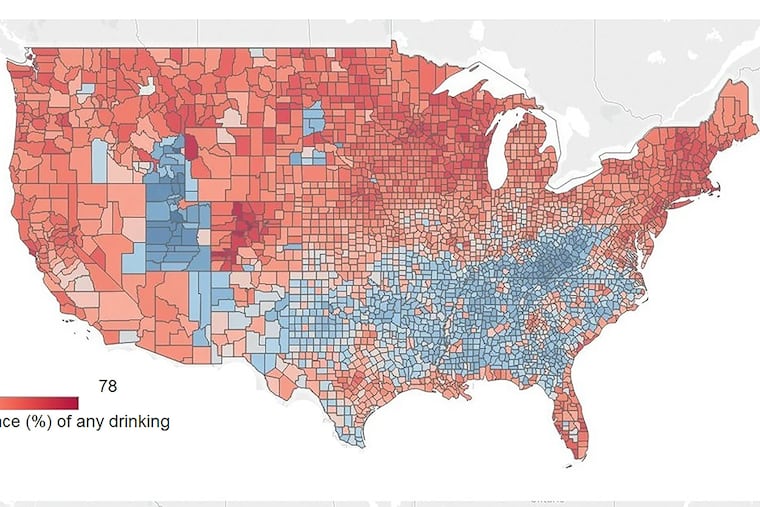Pitt finds a relationship between cold weather and drinking
The study team correlated drinking and liver disease with average temperature and the amount of sunlight.

Now that our days are getting colder and shorter, a new study from the University of Pittsburgh gives us reason to think about the odd relationship between alcohol and weather.
It found that throughout the world and in the United States, drinking levels and liver disease correlated with climate and sunlight. Drinking and disease rose as average temperatures and hours of sunlight fell.
The study, which was published in the journal Hepatology, has public health implications at a time when deaths from cirrhosis of the liver have been rising, particularly among 25- to 34-year-olds. Ramon Bataller, senior author and chief of hepatology at University of Pittsburgh Medical Center, said knowing that heavy drinking is more common in colder climes could help officials who want to reduce damage from alcohol to direct resources toward regions at the highest risk. He also suggested that someone with a family history of alcoholism who has a choice between jobs in, say, Missouri and Minnesota would do well to pick the warmer state.
The World Health Organization estimates that almost 6 percent of deaths throughout the world can be attributed to alcohol misuse.
Bataller said people in colder climates may drink more because alcohol tends to make them feel warmer. On the other hand, people in hot places are more likely to feel uncomfortable or light-headed when they drink. For many people, darkness can also exacerbate depression, which is associated with drinking, though alcohol is a depressant. Snowy climates might also increase isolation, which can make depression worse.
While people in frigid places like Russia are known for heavy drinking, Bataller said the connection between drinking and climate had not been studied systematically before. A team led by Meritxell Ventura-Cots, a postdoctoral researcher at the Pittsburgh Liver Research Center, used large public data sets to compare average temperature and sunlight hours with average alcohol consumption per person, binge drinking, and the percentage of drinkers in a population. They also looked at cirrhosis caused by heavy drinking. The patterns they found held up even when the team controlled for religious restrictions on alcohol use. Florida and Hawaii were exceptions, possibly because so many partying tourists visit, Ventura-Cots said.
She said the study found that in Europe, people in Ukraine drank 13.9 liters of alcohol per capita per year while warmer Italians drank 6.7 liters per capita. (A liter is about 34 ounces.) In the U.S., people in Montana drank 11.7 liters of alcohol per capita per year while people in North Carolina drank just 7.8. (That's still more than two gallons.) Our local states are in the middle with New Jersey at 9 liters per capita and Pennsylvania at 8.9.
The researchers did not have data on whether people drink more in winter than summer.
Generally, public health officials say women should average no more than one drink per day and men no more than two. Adding another drink a day increases the risk for cirrhosis, Bataller said. Obesity and smoking further add to the risk.